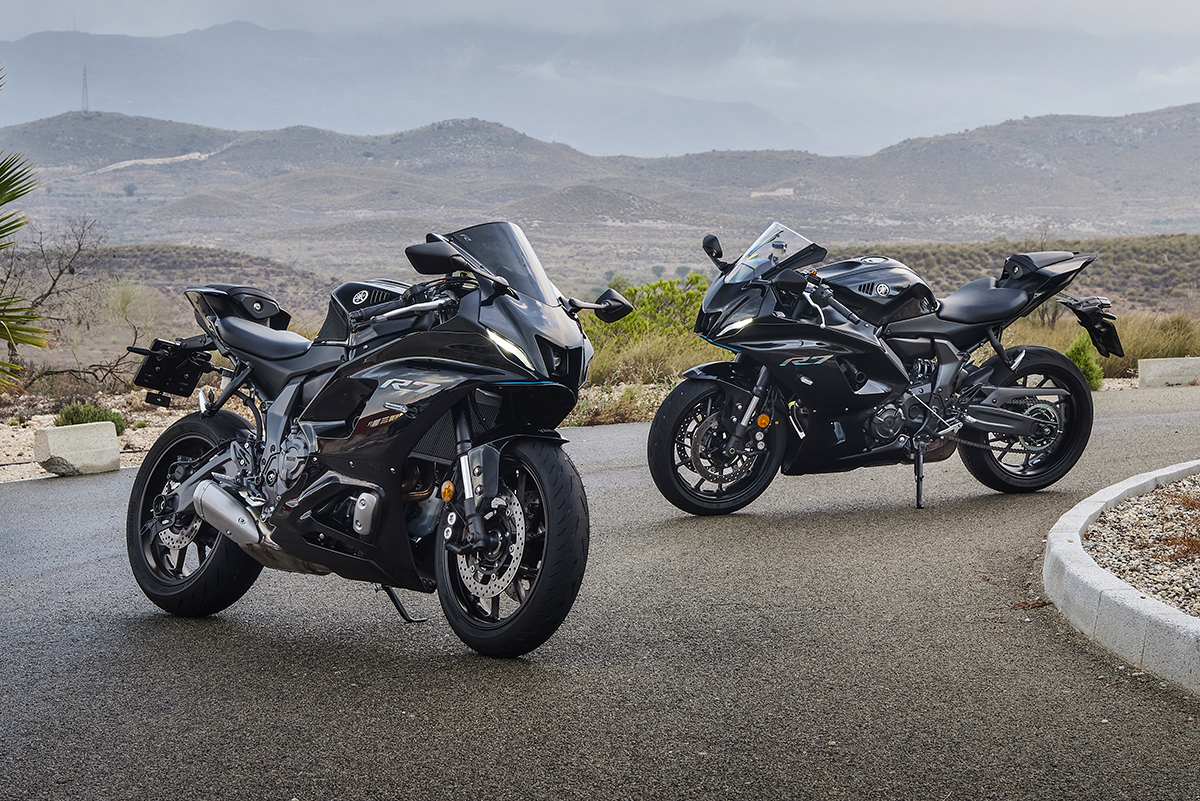
Can you call a motorcycle a ‘sportbike’ if it only makes 73 hp? Yamaha seems to think so. We went to Spain, to test the new Yamaha R7 on the road, and on the demanding Almería race track, to find out just how much fun we could wring out of this new machine.
This is not the first Yamaha to bear the R7 name. Launched in 1999, the original YZF-R7 was a proper race replica in the style of the mighty Honda RC30. Yamaha hoped to rack up some famous wins with it, and they came close. In 2000, Noriyuki Haga won five races of the World Superbike Championship—but failed an FIM drug test, was banned, missed a couple of races, and handed the title to Colin Edwards on the Honda VTR 1000 SP. Close, but no cigar, for the R7!
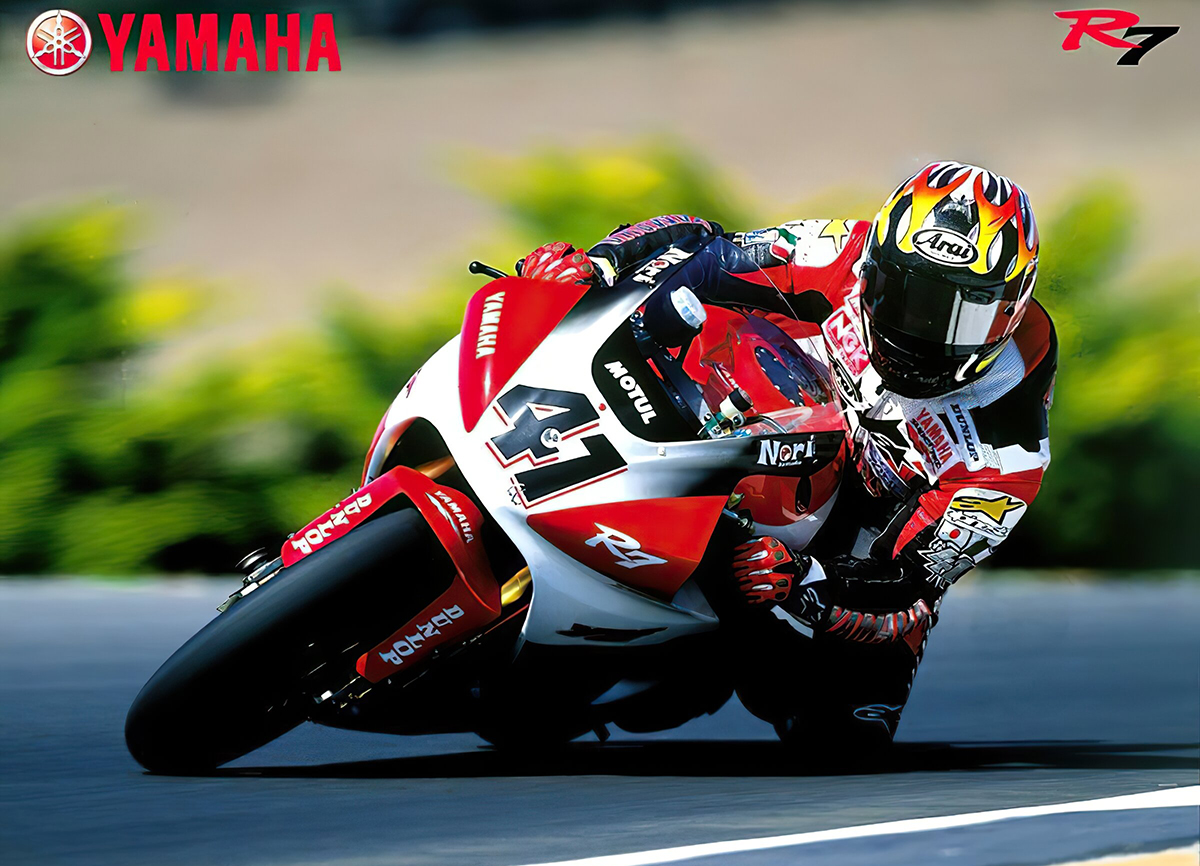
The 1999 and 2022 R7 share little more than a name, but Yamaha says it doesn’t matter. The new model targets riders between 25 and 35 years old—and they would barely have known the 1999 R7.
Times are also hard for superbikes, twenty years on. In Europe, strict speed laws have seen the segment drowning over the years. Worldwide, superbike sales figures have dropped from roughly 140,000 units per year to 30,000 these days. Conversely, sales figures for small capacity sportbikes are good, says Yamaha, who sells the R125 and R3 in many markets.
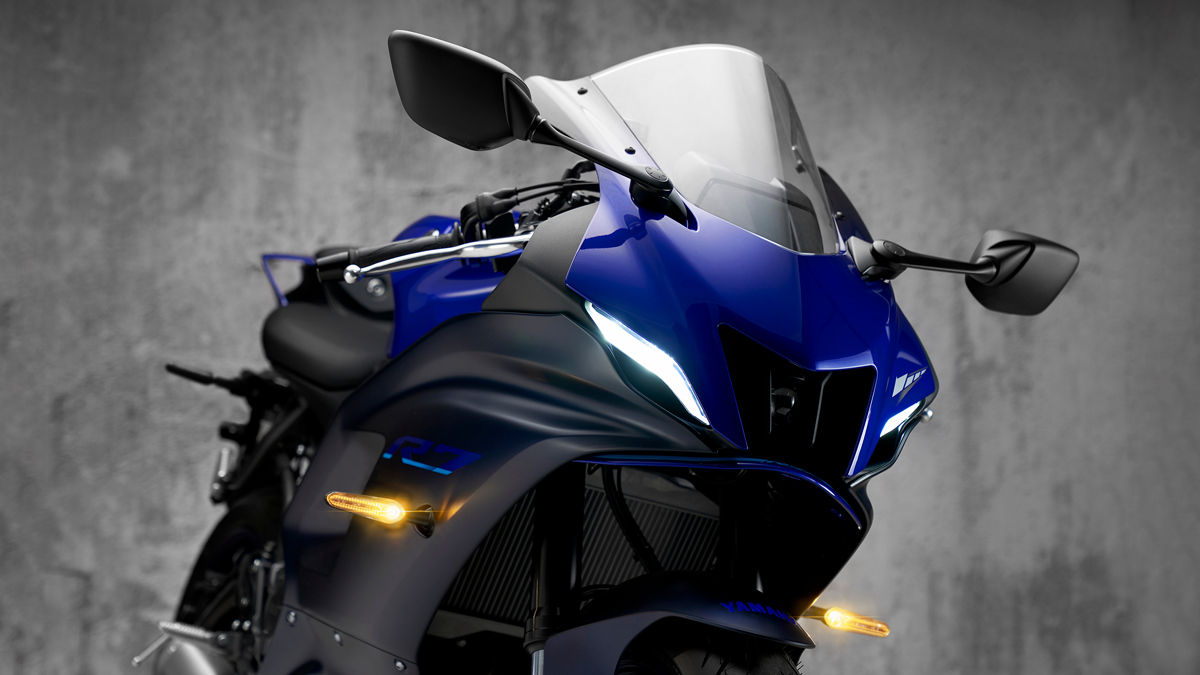
But when those riders want to upgrade, there is a gap between those small capacity machines, and the expensive and intimidating R1. That’s the R7’s mission: to offer something between an R84,950 R3 and an R333,950 R1!
More than a kitted-out MT-07
Take the naked MT-07, put a fairing and some clip-on handlebars on it, and you have the R7, right? It’s not as simple as that. Yamaha has put a lot more work in here.
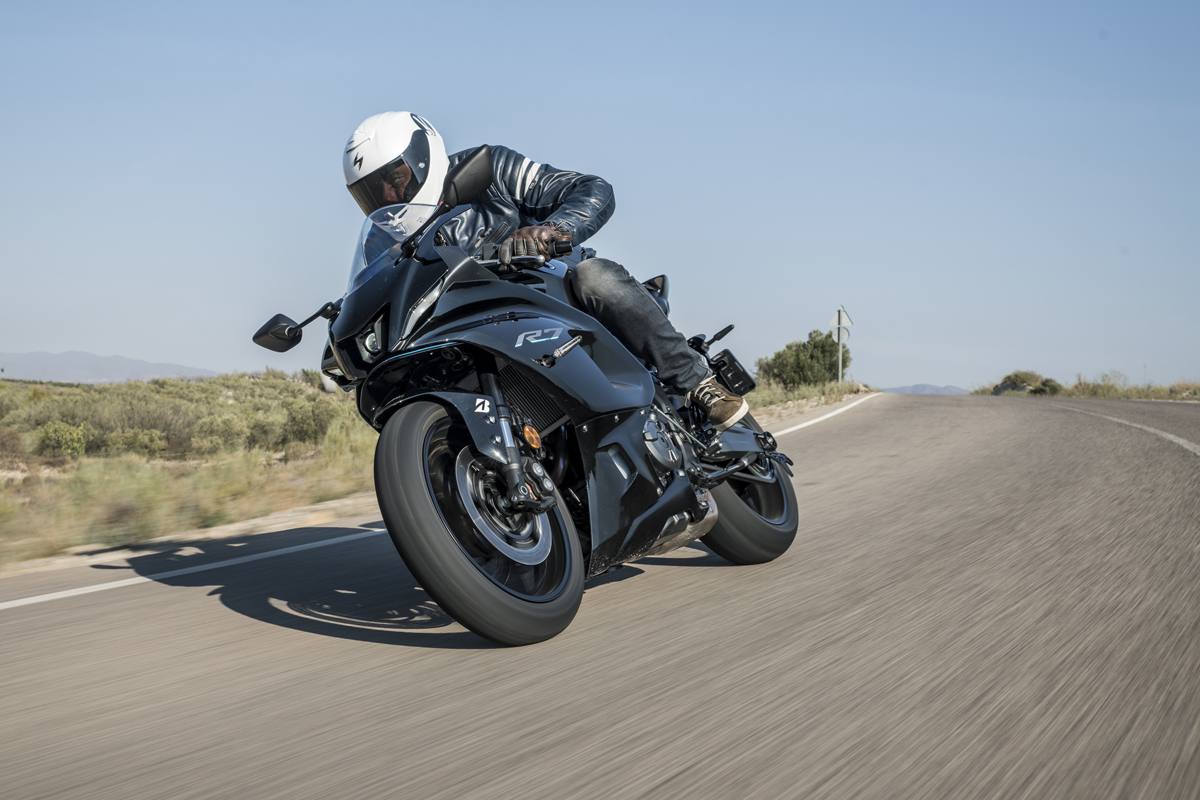
Yes, the engine is exactly the same. Well, nearly; the CP2 engine delivers the same output, which is 54 kW (73,4 hp) at 8,750 rpm and 67 Nm of torque at 6,500 rpm. But the R7 features a slipper clutch, better cooling and a lighter battery. The gear ratio is slightly longer (one more tooth on the sprocket, for a top speed close to 220 km/h) and the throttle feel is more direct. The ECU has also been modified to feature an optional (up only) quick-shifter.
There are more modifications in the chassis department, focused around rigidity. The tubular frame has been reinforced in the centre with an aluminium brace, and the silent block between the frame and swing arm has been removed.
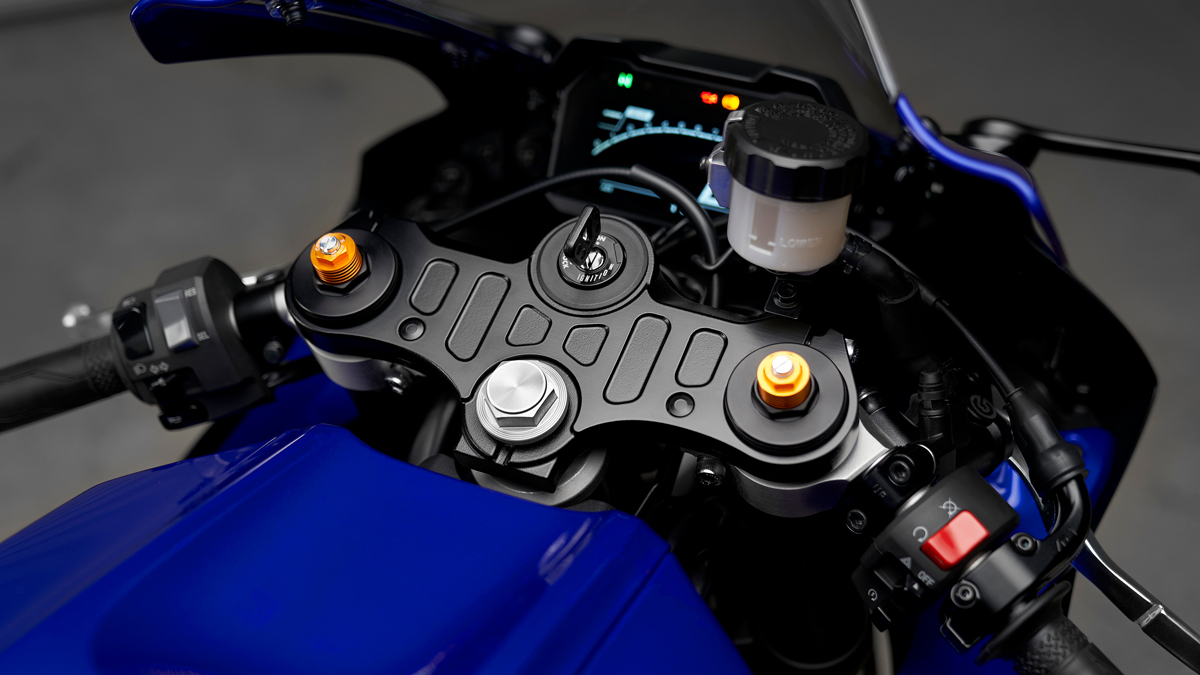
The fully adjustable upside-down 41 mm Kayaba forks are new, while the triple clamps are more rigid than on the MT-07. At the back is a new Kayaba shock, adjustable for preload and rebound. The wheelbase is 5 mm shorter, with weight distribution now 51% over the front.
The tyres are also different from the MT-07, with Bridgestone S22s as standard. The brakes feature a new Brembo master cylinder, which seems to bite callipers from the older generation R6.
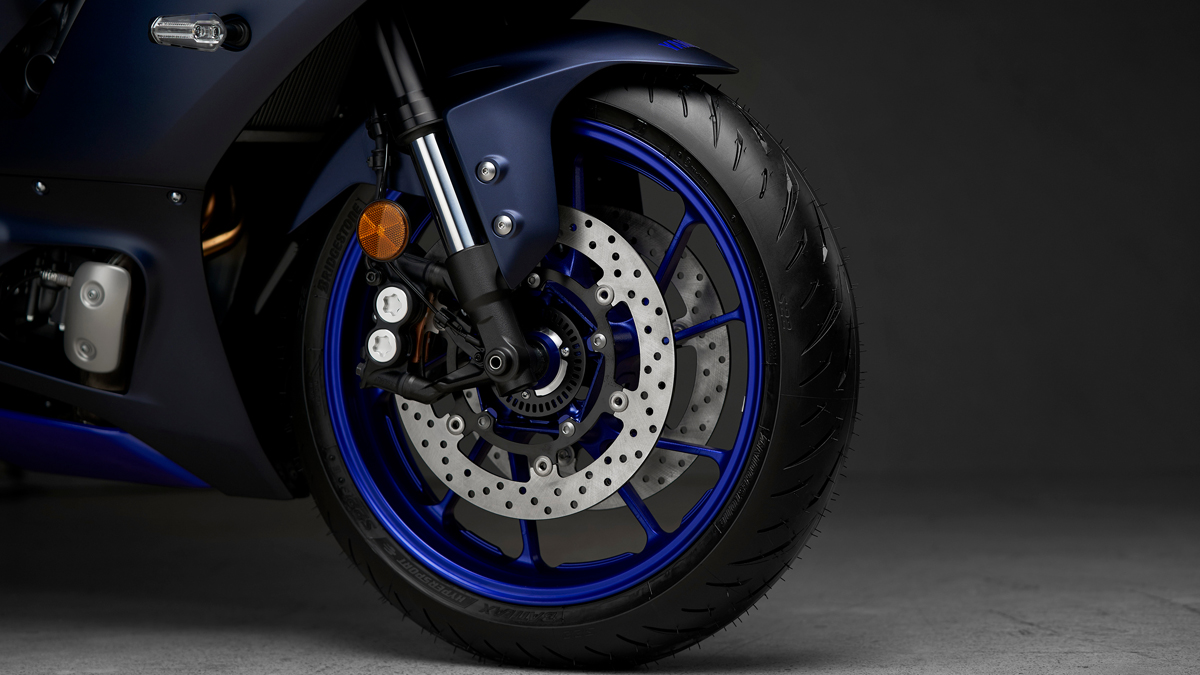
As for the fairing, Yamaha claims it’s the most aerodynamic amongst the R-Series range! And it’s certainly the most expressive too, when you look at the signature LED headlights.
Like an R6… or not?
Yamaha decided to make the rider fully committed to riding the R7, with a sporty riding position comparable to that of the R6. The handlebars are quite low—and once you get over the 835 mm seat height, you feel ready to race.
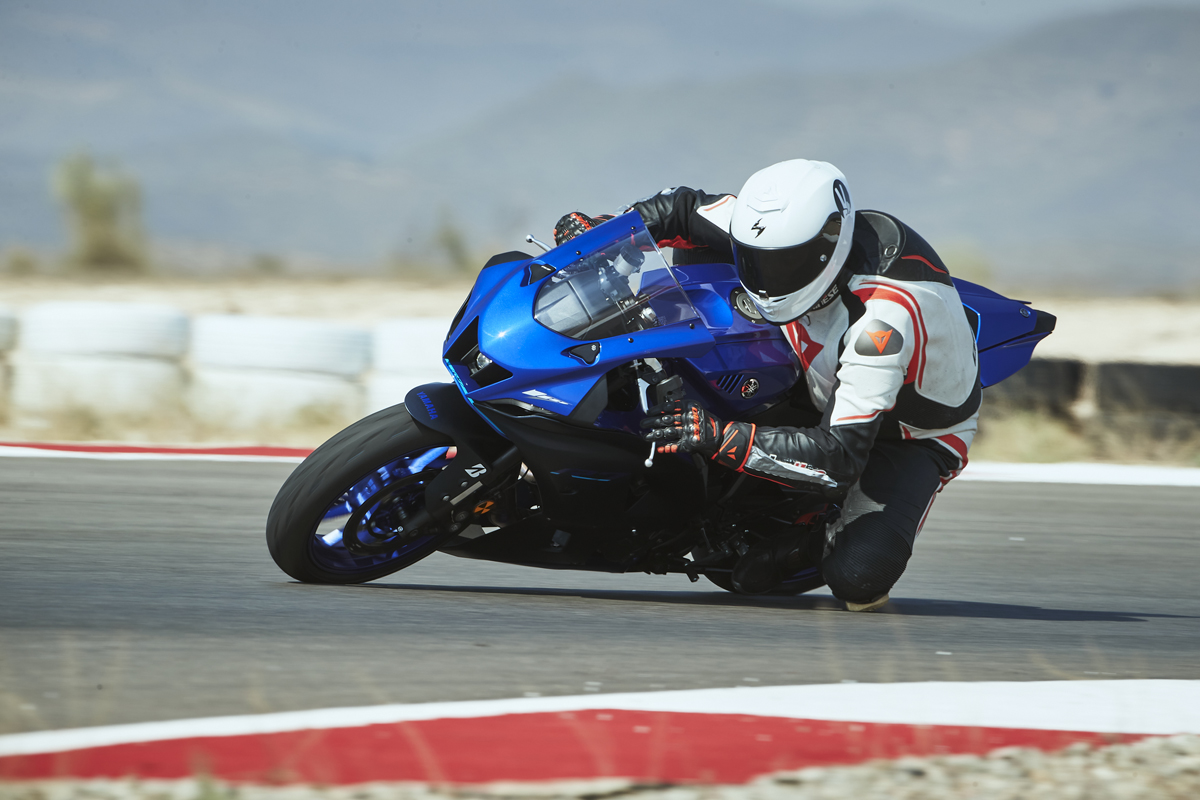
The instrument panel, is an LCD unit, with a big gear position display. The clutch lever is not adjustable, but the front brake lever is; Yamaha did not neglect these sporty details.
Despite those racing handlebars, the R7 is not that extreme to ride, and is much more accommodating than an old R6. We started our test with some city riding, and on the sunny Spanish Mediterranean coast, the steering angle is very decent for a sportbike. The suspension is quite plush, and the CP2 engine is torquey from low revs—very far from the peaky and screaming nature of a 600 cc four-cylinder engine. The R7 will be much easier to handle for commuting than a proper sportbike.
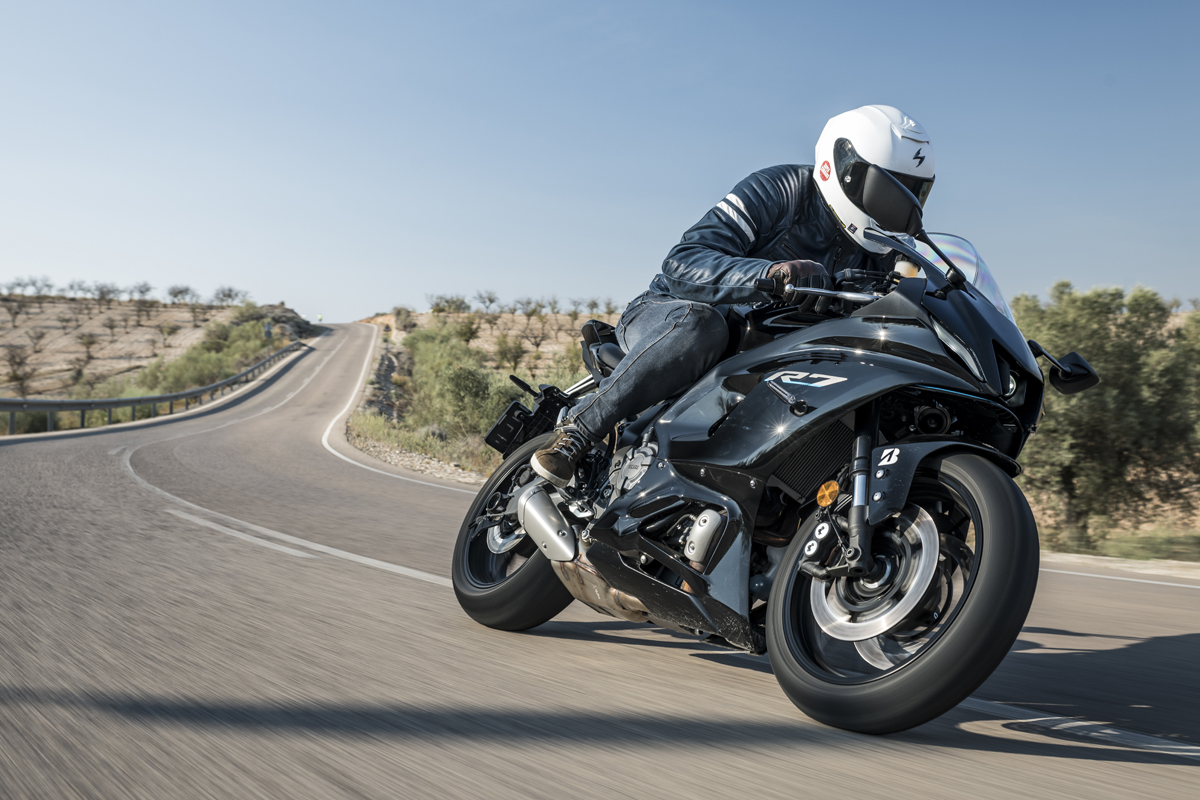
Fun on the road, fun at the track!
Flat out, the shift light flashes in 6th gear at 225 km/h on the speedo. Not bad for a 73 hp motorcycle, and fast enough to get into trouble with the wrong police officer.
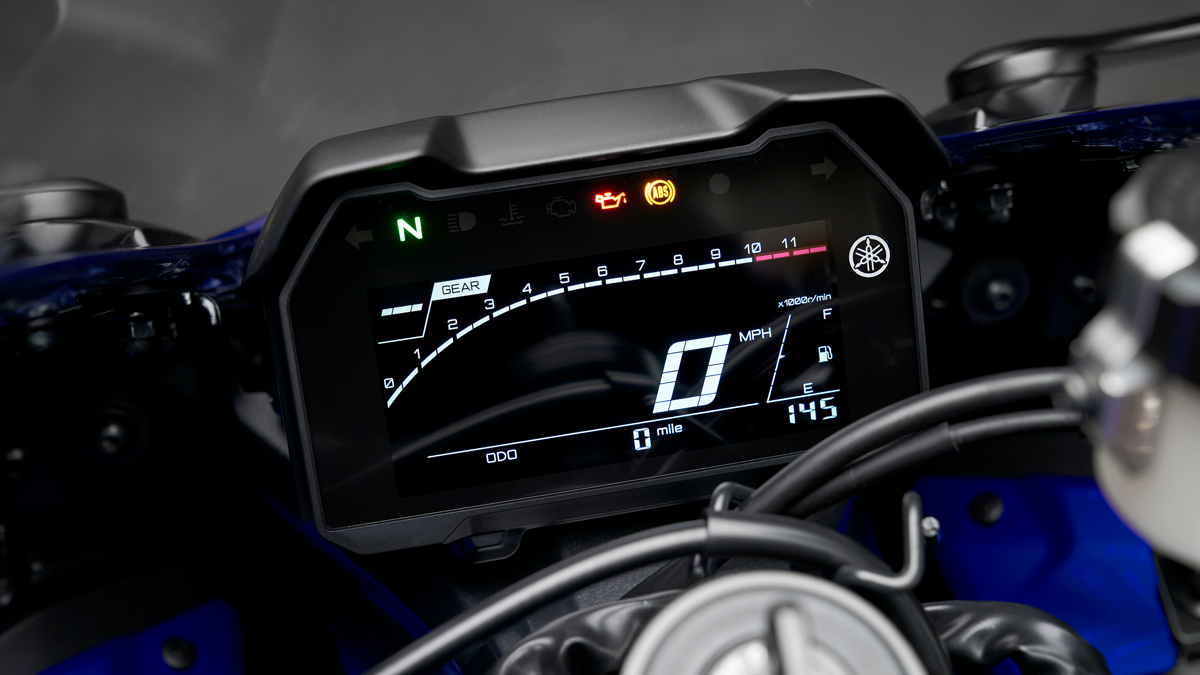
Although sporty, the riding position is not cramped, and there is room on the seat to move a bit backwards. But we all know that motorcycle pleasure is not just about speed. Near Almería, there are some very nice twisties that look a lot like the stretch between Sabie and Hazyview. It’s not slow, but not too fast either, and that’s the perfect setting for the R7.
I can tell you frankly: I had a lot of fun on the road, because the R7 is light, has super brakes and is incredibly easy and agile. The torquey nature of the CP2 engine makes it easy to exit corners, and it doesn’t take long for you to forget about the gear you’ve engaged, and focus only on the ride, your lane, and your braking points.
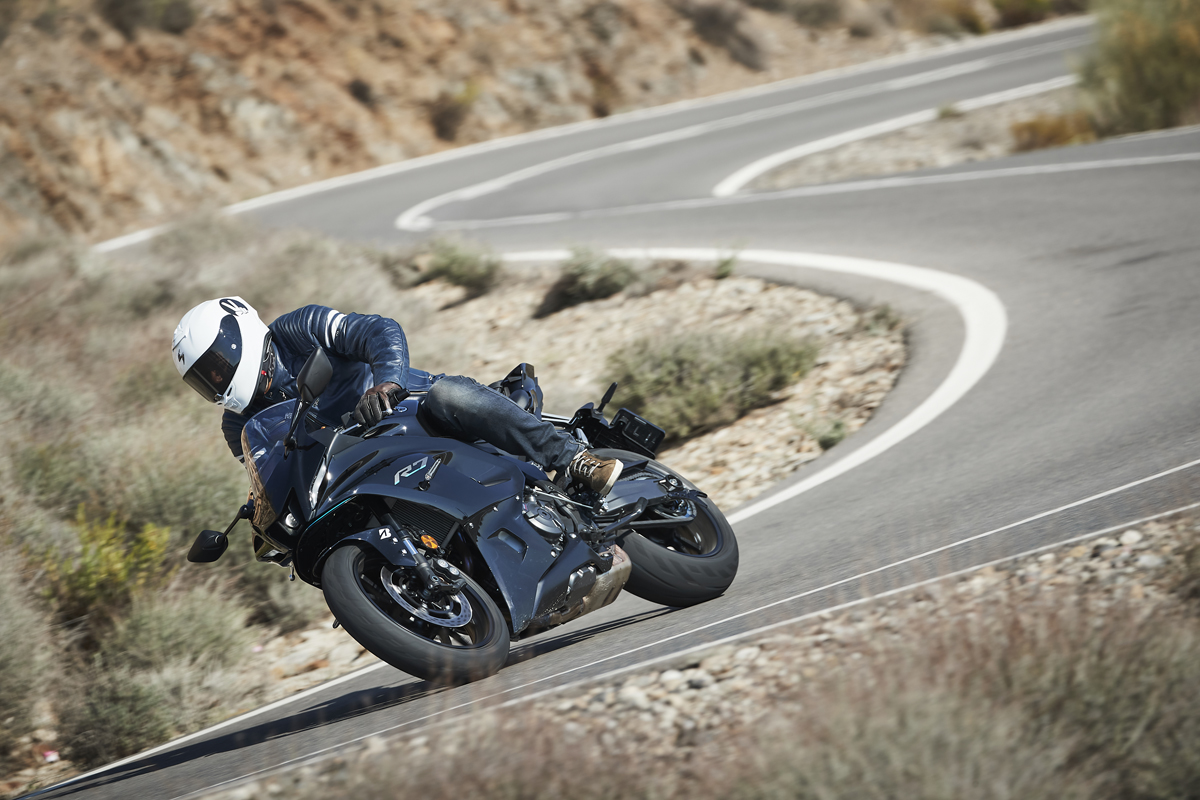
This commendable nature is also relevant at the racetrack. Yes, the rather limited power output won’t make it the best tool for fast tracks such as Kyalami or Welkom, but I believe it will do great at Zwartkops or Killarney.
I had the chance to test ride it on the new Andalucia racetrack, a more than 5-kilometre layout with many difficulties, from blind corners to triple-apex curves. Yamaha gave us Bridgestone R11 tyres, so grip was not an issue. Easy, agile and stable, the R7 is the perfect sportbike for beginners—and for experienced riders too, because it’s so much fun! Thanks to the perfect track riding position, I had no issue moving around on the bike and putting my knee down.
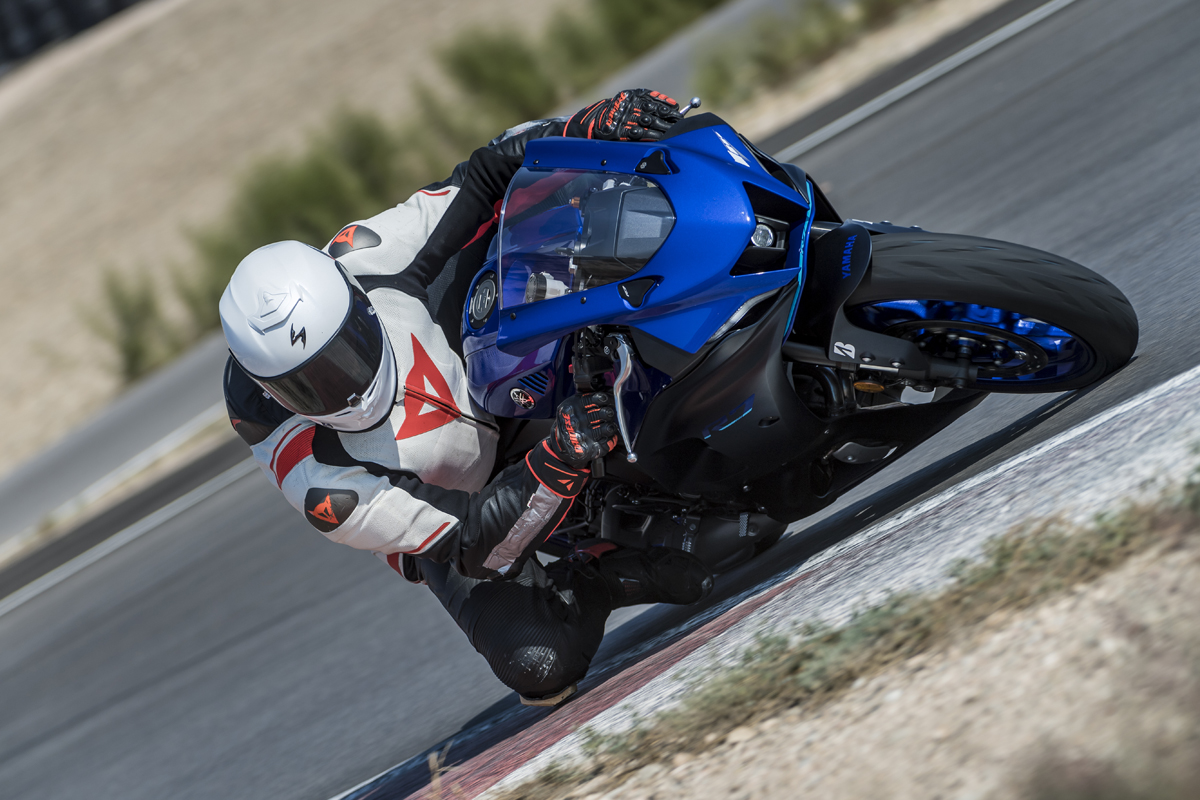
The brakes were sharp and precise all through the three sessions I had on the bike, and, thanks to the bike’s weight, you can really work on your cornering speed. On the downside, the gear shifter is not the sharpest and quickest I have ever seen, and the CP2 engine has some vibrations at high revs; it also requires a bit of space to reach 200 km/h.
Besides that, the R7 is safe, even when the pace gets faster, although the suspensions start to feel a bit soft (especially the rear) when you push harder. For the occasional track day, or for those who wish to learn the subtleties of track riding progressively, the new R7 is the perfect tool.
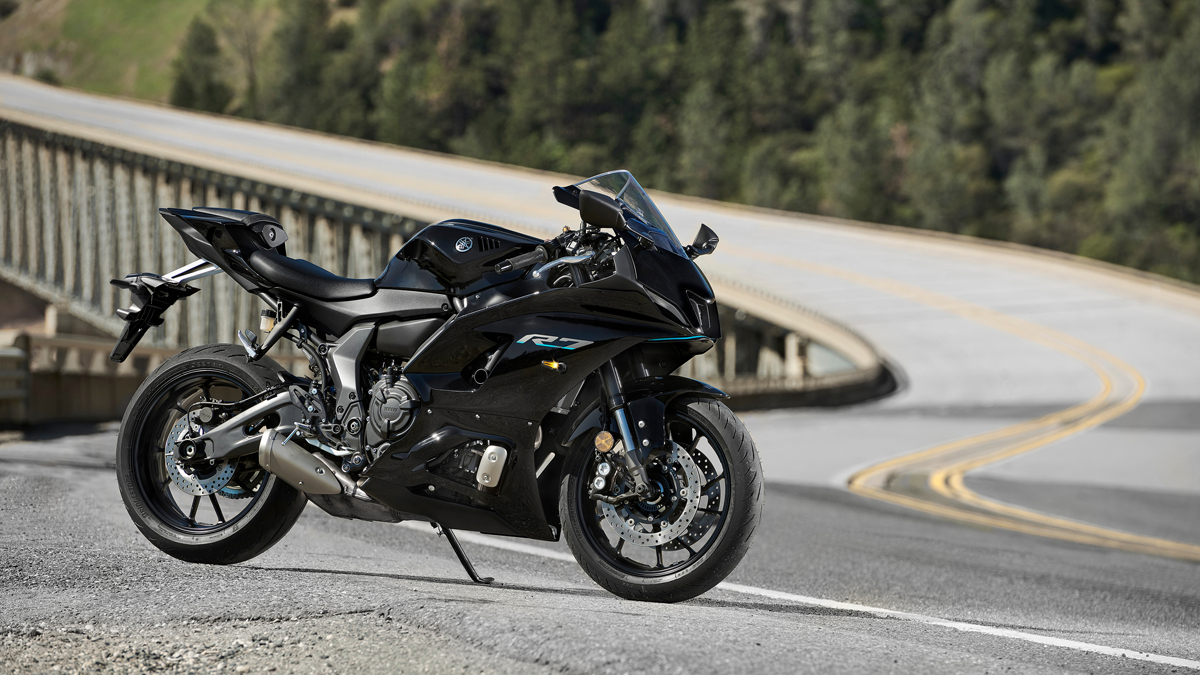
To conclude, the R7 is a bit of a unique offer on the market. Although it will be a bit more comfortable, a Kawasaki Ninja 650 is not as rewarding to ride. Want a four-cylinder machine? A Honda CBR 650 R is more powerful (95 hp), but heavier, and I bet you won’t take corners as fast as on the R7. The Aprilia RS 660 offers more power and more electronics, but it’s also more expensive. There’s no doubt that Yamaha has hit the right mark with the R7.




